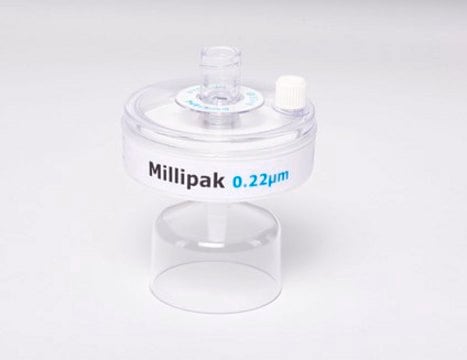一般說明
We are committed to bringing you greener alternative products, which adhere to one or more of the 12 Principles of Green Chemistry. This antibody is preservative-free, produced without the harm or sacrifice of animals and exceptionally stable to allow for ambient shipping and storage if needed, and thus aligns with "Waste Prevention", "Designing Safer Chemicals" and "Design for Energy Efficiency".
Click here for more information.
ZooMAb® antibodies represent an entirely new generation of recombinant monoclonal antibodies. Each ZooMAb® antibody is manufactured using our proprietary recombinant expression system, purified to homogeneity, and precisely dispensed to produce robust and highly reproducible lot-to-lot consistency. Only top-performing clones are released for use by researchers. Each antibody is validated for high specificity and affinity across multiple applications, including its most commonly used application. ZooMAb® antibodies are reliably available and ready to ship when you need them.
特異性
Clone is a ZooMAb® rabbit recombinant monoclonal antibody that detects Piezo1. It targets an epitope within 24 amino acids from the of the C-terminal extracellular domain.
免疫原
KLH-conjugated linear peptide corresponding to 24 amino acids from the C-terminal extracellular domain of human Piezo1.
應用
Quality Control Testing
Evaluated by Western Blotting in HeLa cell lysate.
Western Blotting Analysis: A 1:1,000 dilution of this antibody detected Piezo1 in HeLa cell lysate.
Tested Applications
Western Blotting Analysis: A 1:1,000-10,000 dilution from a representative lot detected Piezo1 in lysates from Neuro-2a cells, rat brain tissue, and MCF-7 cells.
Flow Cytometry Analysis: 1 µg from a representative lot detected Piezo1 in one million Jurkat cells.
Immunocytochemistry Analysis: A 1:100 dilution from a representative lot detected Piezo1 in HeLa cells.
Affinity Binding Assay: A representative lot of this antibody bound Piezo1 peptide with at least ten thousand-fold (10,000X) higher than with non-specific control peptide.
Note: Actual optimal working dilutions must be determined by end user as specimens, and experimental conditions may vary with the end user.
標靶描述
Piezo-type mechanosensitive ion channel component 1 (UniProt: Q92508; also known as Membrane protein induced by beta-amyloid treatment (Mib), Protein FAM38A) is encoded by the PIEZO1 (also known as FAM38A, KIAA0233) gene (Gene ID: 9780) in human. Piezo1 is a mechanosensitive ion channel characterized by its large structure and complex topology. It consists of over 2500 amino acids forming a trimeric assembly. Each subunit has multiple transmembrane helices that are thought to form a propeller-like structure with a central pore. This unique architecture is critical for its function as a mechanosensor and ion channel. Piezo1 is primarily responsible for converting mechanical stimuli into biological signals, a process known as mechanotransduction. It is an ion channel that allows the passage of cations, including calcium, into the cell in response to mechanical forces such as stretch or pressure. This activity is crucial for various physiological processes including vascular development, blood flow regulation, and touch sensation. Piezo1 is broadly expressed in many tissues but is particularly prominent in cells that are exposed to mechanical stress, such as endothelial cells, red blood cells, and certain epithelial cells. Its expression levels and activity can be modulated by mechanical stimuli, indicating that Piezo1 expression is closely linked to the functional demands of different tissues. Mutations in the Piezo1 gene can lead to various hereditary diseases. For instance, mutations causing gain of function in Piezo1 are linked to hereditary xerocytosis, a disorder characterized by dehydration of red blood cells. Loss of function mutations or dysregulation of Piezo1 has implications in conditions such as pulmonary arterial hypertension and lymphatic dysplasia. Additionally, Piezo1 is being investigated for its role in cancer, where its mechanosensitive properties may influence tumor progression and metastasis.
外觀
Purified recombinant rabbit monoclonal antibody IgG, lyophilized in PBS with 5% Trehalose, normal appearance a coarse or translucent resin. The PBS/trehalose components in the ZooMAb formulation can have the appearance of a semi-solid (bead like gel) after lyophilization. This is a normal phenomenon. Please follow the recommended reconstitution procedure in the data sheet to dissolve the semi-solid, bead-like, gel-appearing material. The resulting antibody solution is completely stable and functional as proven by full functional testing. Contains no biocide or preservatives, such as azide, or any animal by-products. Larger pack sizes provided as multiples of 25 µL.
重構
300 µg/mL after reconstitution at 25 µL per vial. Please refer to guidance on suggested starting dilutions and/or titers per application and sample type.
儲存和穩定性
Recommend storage of lyophilized product at 2-8°C; Before reconstitution, micro-centrifuge vials briefly to spin down material to bottom of the vial; Reconstitute each vial by adding 25 µL of filtered lab grade water or PBS; Reconstituted antibodies can be stored at 2-8°C, or -20°C for long term storage. Avoid repeated freeze-thaws.
法律資訊
ZooMAb is a registered trademark of Merck KGaA, Darmstadt, Germany
免責聲明
Unless otherwise stated in our catalog or other company documentation accompanying the product(s), our products are intended for research use only and are not to be used for any other purpose, which includes but is not limited to, unauthorized commercial uses, in vitro diagnostic uses, ex vivo or in vivo therapeutic uses or any type of consumption or application to humans or animals.











